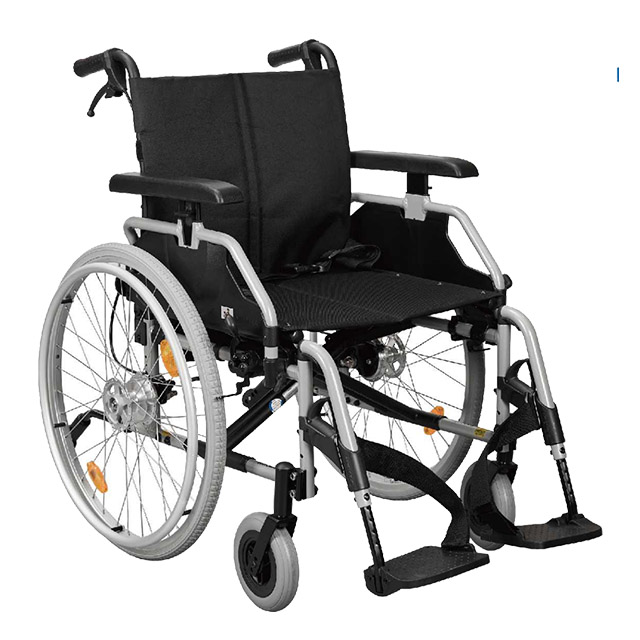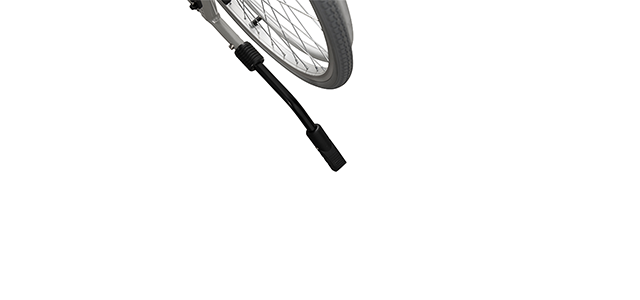Wheelchair definition
Wheelchairs are an important tool for rehabilitation. They are not only a means of transportation for physically disabled people, but more importantly, they enable them to exercise and participate in social activities with the help of wheelchairs. Ordinary wheelchairs generally consist of four parts: wheelchair frame, wheels, brake device and seat.
The development history of wheelchairs
Ancient times
- The oldest record of a wheelchair in China is around 1600 BC. The pattern of a wheelchair was found on the carvings of the sarcophagus.
- The earliest records in Europe are wheelbarrows in the Middle Ages (which require other people to push, closer to contemporary nursing wheelchairs)
- In the world-recognized history of wheelchairs, the earliest record is from the Northern and Southern Dynasties of China (AD 525). The carvings of chairs with wheels on sarcophagi are also the predecessors of modern wheelchairs.
Modern times
Around the 18th century, wheelchairs with a modern design appeared. It consists of two large wooden front wheels and a single small wheel at the back, with a chair with armrests in the middle.
Progress by war
- The emergence of lightweight wheelchairs made of rattan with metal wheels appear in the American Civil War.
- After World War I, the wheelchairs used by the wounded in the United States weighed about 50 pounds. The United Kingdom developed a hand-cranked three-wheeled wheelchair, and soon added a power drive device to it.
- In 1932 AD, the first modern foldable wheelchair was invented
Physical education
- In 1960 AD, the first Paralympic Games were held in the same location as the Olympic Games – Rome.
- In the 1964 Tokyo Olympics, the term “Paralympics” appeared for the first time.
- In 1975, Bob Hall became the first person to complete a marathon in a wheelchair.
Wheelchair classification
General wheelchair
It is a wheelchair sold by general medical equipment stores. It is roughly in the shape of a chair. It has four wheels. The rear wheel is larger and a hand wheel is added. The brake is also added to the rear wheel. The front wheel is smaller and is used for steering. The back of the wheelchair Add an anti-tipping

Special wheelchair (custom-made)
Depending on the patient’s condition, there are many different accessories, such as reinforced load-bearing, special back cushions, neck support systems, adjustable legs, removable dining tables, etc.
Special wheelchair (sports)
- Specially designed wheelchair used for recreational sports or competition.
- Common ones include racing or basketball, and those used for dancing are also very common.
- Generally speaking, lightweight and durability are the characteristics, and many high-tech materials are used.
Conditions that a wheelchair should meet
- Easy to fold and carry
- Meet the needs of the condition
- Strong, reliable and durable
- Specifications and sizes are adapted to the user’s body shape
- Save effort and consume less energy
- The price is acceptable to general users
- Have a certain degree of autonomy in choosing appearance and functions
- Easy to buy parts and repair
Wheelchair structure and accessories
Ordinary wheelchair structure
Wheelchair rack
Fixed:It has better strength and rigidity, is easier to maintain the linear relationship of the wheelchair than the folding type, has minimal rotational resistance, has a simple structure, is cheap, and is suitable for homemade use.
Foldable:It is small in size and easy to carry and transport. Most of the wheelchairs currently used clinically are foldable.
Wheels
Rear wheel:Wheelchair load-bearing part;Most wheelchairs have the big wheels at the back, but in special circumstances they need the big wheels at the front.
Caster:When the diameter is larger, it is easier to cross obstacles, but when the diameter is too large, the space occupied by the wheelchair becomes larger and it is difficult to move.
Tyre
Brake
Seat and Baskrest
Seat:height, depth and width
Backrest:Low backrest, high backrest; reclining backrest and non-reclining backrest
- Low backrest:The trunk has a large range of motion, but requires the user to have certain trunk balance and control abilities
- High backrest:The upper edge of the backrest generally exceeds the shoulders, and a headrest can be attached;Generally, the backrest can be tilted and adjusted to change the pressure area on the buttocks to prevent pressure sores. When postural hypotension occurs, the backrest can be flattened.
Legrest and footrest
- Legrest
Armrest
Anti-tipper
- When you need to lift the casters, you can step on them to prevent them from anti-tipper
- Prevent the wheelchair from tipping backward when the wheelchair leans excessively backwards
Post time: Nov-29-2024









